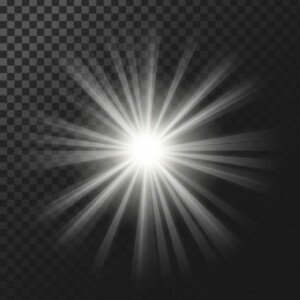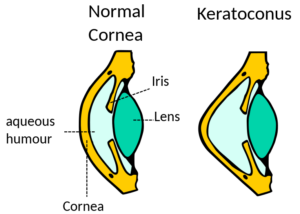
You will kick yourself for not having thought of this brilliant solution to reducing LASIK starbursts when you drive at night.
I had a Eureka! moment when I was staring out my kitchen window at night, eyes affixed to the dandelion-fuzz-like starbursts of streetlights in the distance.
Thirteen months prior I’d had LASIK. I’d had starbursts while night driving since then, though they’ve gotten better (I don’t know at what point though).
I’ve been driving at night all this time, having habituated to what I consider to be a mild degree of starbursting — which is much more pronounced in the distance, and oddly, pretty much clears up as vehicles become closer.
After six months post-LASIK I had resigned to the fact that this side effect was permanent.
• Average diopter for both eyes: -8
• Astigmatism
• 8.5 mm pupils at max dilation
Inspiration for Ingenious Solution to Reducing Nighttime Driving Starbursts
One evening I was diving along a lengthy and winding mountain road for which there was no barrier or median separating oncoming traffic; it was simply in the next lane.
It was intimidating due to the starbursts which were much worse at that time, as that had been four months out from the procedure.
I was driving my elderly parents and brother home from a college volleyball match featuring his daughter.
He wanted me to drive so that he could enjoy some pre-trip drinks. I wanted to drive, too, because I’m protective of my elderly parents.
Nobody other than the LASIK surgeon and his optometrist know that I see starbursts at night. My mother would have a fit if she knew and would never sleep the same again.
My brother would feel safer driving after five drinks than by a sober person with post-LASIK starbursts.
This trip will be repeated in a few months when my niece comes out here for a volleyball match against the same college.
I was thinking about having to drive again under those circumstances.
So there I was, staring out the kitchen window at the dandelion lights at night (distant street lights are the worst), while inside my home was dark.
I then flipped on the dimmer switch for some low lighting and instantly saw the starbursts shrink. I increased the lighting, and the starbursts shrunk more.
I turned the dimmer all the way up and the distant street lights now actually looked like normal lights.
Eureka!
After spending inordinate amounts of time searching for solutions online – Alphagan drops, anti-glare glasses, pinhole glasses, “over minus” glasses, macrolenses (are you kidding me?!) and enhancement surgery – it dawned on me:
Mount a flashlight in my car and point it towards my face!
Now I don’t mean directly – but from below chest level and somewhat to the side, so that it’s not a direct shine into the face.
This solves the problem of nighttime starbursts when driving because the illumination of my face forces continuous constriction of my pupils.
Again, do not have the flashlight shining directly into your eyes. It must be in your peripheral vision, aiming at your face. It will not “blind” you if it’s set up just right.
I need to point out that this technique may not diminish starbursts in severely affected people enough to make night driving possible again.
But for those with a milder degree of starbursting, I’m betting you’ll be overjoyed.
My initial experiment involved just holding the flashlight at varying points about the car while I drove, and immediately it worked.
The challenge was then to mount it somehow in the perfect spot. So next day I went to Home Depot and purchased industrial strength sticky pads.
It took some time before I was able to figure out just where to mount the flashlight, and by golly, this son-of-a-gun hack is ingenious!
Make sure it’s a bright flashlight. The one I purchased did not say how many lumens it is, but it’s pretty bright.
Experiment with various positions. I am confident that, at least for those who can still drive despite starbursts, this solution will work wonders.
UPDATE: Nighttime starbursts have diminished; I no longer use a flashlight and feel quite confident driving at night no matter how many oncoming headlights there are.


























